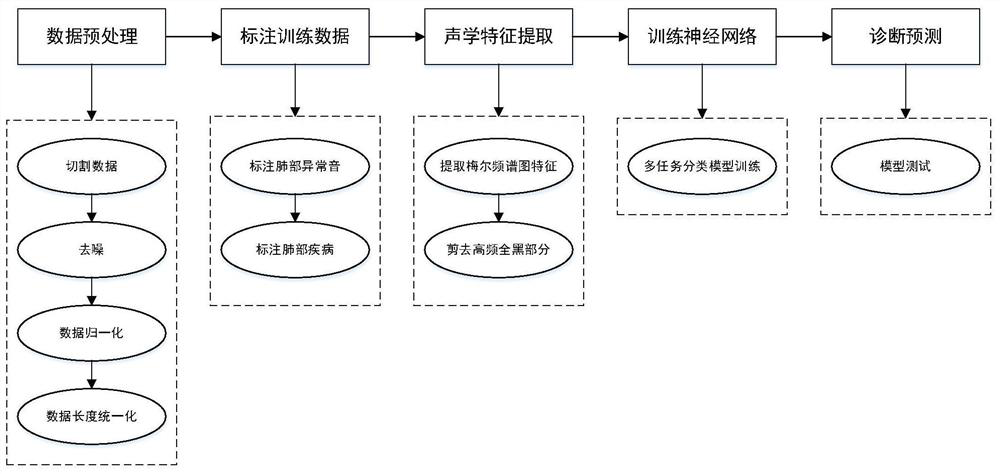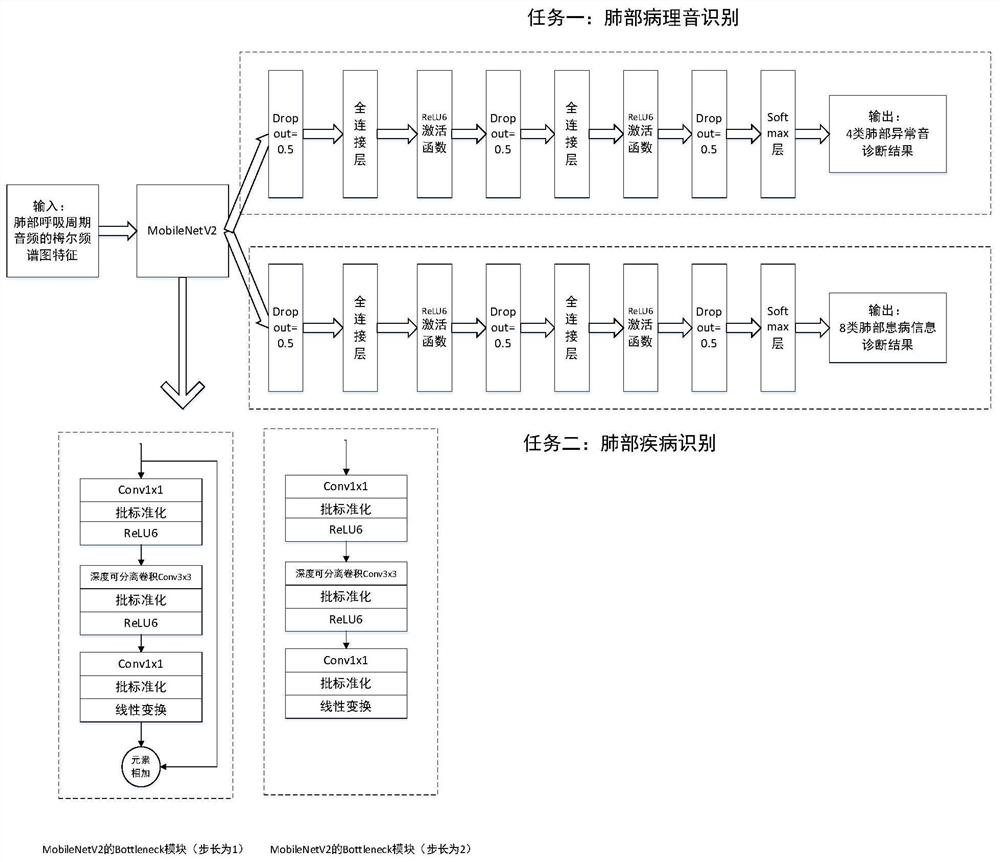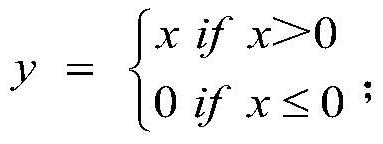An automatic analysis method for lung pathological sounds based on multi-task classification
An automated analysis and multi-task technology, applied in medical automated diagnosis, stethoscope, diagnosis, etc., can solve problems such as small amount of data, weak model generalization ability, difficulty in distinguishing relevant and irrelevant features, and achieve small memory size and improved Generalization performance and the effect of improving prediction accuracy
- Summary
- Abstract
- Description
- Claims
- Application Information
AI Technical Summary
Problems solved by technology
Method used
Image
Examples
Embodiment Construction
[0046] The following will clearly and completely describe the technical solutions in the embodiments of the present invention with reference to the accompanying drawings in the embodiments of the present invention. Obviously, the described embodiments are only some, not all, embodiments of the present invention. All other embodiments obtained by persons of ordinary skill in the art based on the embodiments of the present invention belong to the protection scope of the present invention.
[0047] According to an embodiment of the present invention, an automatic analysis method for pulmonary pathological sounds based on multi-task classification is provided.
[0048] Such as figure 1 As shown, the automatic analysis method for pulmonary pathological sounds based on multi-task classification according to an embodiment of the present invention comprises the following steps:
[0049] Pre-collect the lung sound audio data information, and perform preprocessing to unify the audio cl...
PUM
 Login to View More
Login to View More Abstract
Description
Claims
Application Information
 Login to View More
Login to View More - R&D
- Intellectual Property
- Life Sciences
- Materials
- Tech Scout
- Unparalleled Data Quality
- Higher Quality Content
- 60% Fewer Hallucinations
Browse by: Latest US Patents, China's latest patents, Technical Efficacy Thesaurus, Application Domain, Technology Topic, Popular Technical Reports.
© 2025 PatSnap. All rights reserved.Legal|Privacy policy|Modern Slavery Act Transparency Statement|Sitemap|About US| Contact US: help@patsnap.com



